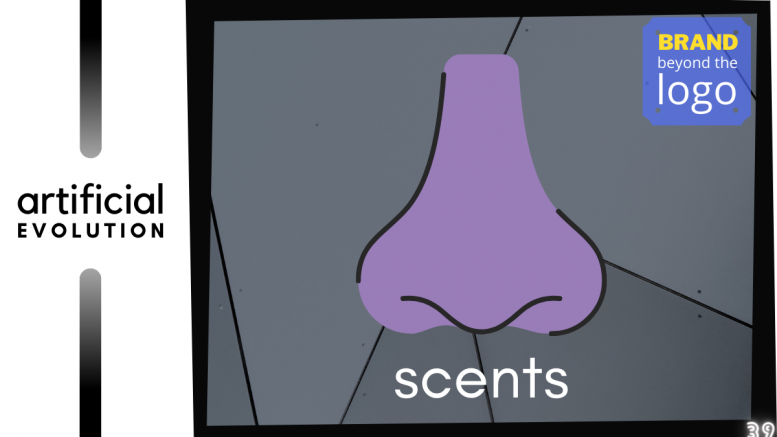In continuation of our “Brand beyond the logo” series, this week we discuss how brands use our sense of smell to increase recall, create stickiness and subconsciously influence the end user. To read part 1 of this series on audio, click here. To read part 2 on touch and haptics, click here.
It happened to me
About two years ago, I walked into the Hyatt Place in Cybercity for a conference. This venue, like most hotels that hold conferences and exhibitions, had a separate entry point.
At the time, I ignored this.
I walked into the main entry and made my way to the concierge to ask about my registration details. There was a subtle aroma of lemongrass wafting by. I assumed it was the spa. Didn’t think about it again.
About two hours later, I was waiting in the lobby for a colleague and I felt it again. Same aroma – same consistency. I was curious.
A quick online search said that every single Hyatt Place follows a specific scent profile (either per week or based on special occasions). Hyatt has been using this principle since 2007. They even have a branded scent called Seamless that they rolled out across the US and some parts of Europe and Asia. The brand uses custom diffusers and oils to create an even spread across their common areas (including a tropical coconut fragrance near the pools at some locations).
There is science to it. According to RealLifePsych, the scent of lemongrass helps in reducing anxiety, stress and increases situational awareness.
The Olfactory Logo
Yep. That’s a real thing.
Our olfactory senses have the strongest link to memory. According to the Harvard Gazette,
“Smells are handled by the olfactory bulb, the structure in the front of the brain that sends information to the other areas of the body’s central command for further processing. Odors take a direct route to the limbic system, including the amygdala and the hippocampus, the regions related to emotion and memory.”
Basically, smells biologically make us remember things better.
This olfactory logo, also called fragrance brand, is a way for brands to create an individual fragrance to embody their unique brand characteristics. Fragrance brand is everything to create a signature scent that is associated with a brand or evokes a certain emotion.
Interestingly, brands build memories and influence our childhood as we refine our sense of smell in many areas of our lives. Knowing what the ingredients of the fragrance are and what we don’t like, we can separate the clean brands from the others. Some, for example, have had a distinctive scent for years and are unintentionally ahead of the game (Entered a Monginis recently?)
So what reasons do brands use fragrances for?
- Enhanced experience: Service based businesses like Car showrooms, salons, restaurants/hotels and beauty/cosmetics outlets use scents to their advantage by engaging with the ‘halo effect’. Essentially, if one thing is good from brand ‘A’, other things maybe good too. More importantly, since diffuser and spray technology has become automated. The running costs, although still premium have become palatable to clients. Food brands use like Burger King and Krispy Kreme use this to also attract customers. Mashed, a food-based YouTube channel tells us the Krispy Kreme smell story:
- Immersion: From the days of scratch and sniff to immersive VR, fragrances have been used to create better immersion for entertainment and lifestyle products. HapticSol, a company that specializes in immersion add-ons for virtual reality games and experiences released their developer kit in 2020. Think about it this way, you’re wearing your VR kit – walking through a forest and the whiff of pine is in the air. Suddenly, you walk next to a clearing with a lake and a waterfall. And you can ‘smell’ that too. Linus from LinusTechTips explains:
- Sales: Used mostly in movie theaters and food joints, brands use nebulizers to pump in smells that could influence impulse purchases. The most popular example is popcorn at movie theaters. Not too exploited in India, but many international chains actually spread synthetic popcorn scents to increase purchase at the food counter. Many Indians brand use this effectively too. Think about some of the most iconic local food brands in Mumbai, Delhi and other major cities. Their cash-cow products like Samosas, Pav Bhaji, Kebabs are usually outside the actual sitting area. Works like a live infomercial for passers-by.
What comes next?
It boils down to the user experience and motive. Brands have knowingly or unknowingly used scent based branding for years and with the inflow of cheap diffusers and nebulizers, we’ll probably see more synthetic scents as part of the brand experience.
As marketers, this could be our Ace in the hole. According to NewNeuroMarketing, customers spent 45% more at casinos and stores that use effective scents. When telling your client about ‘this new fad’ of olfactory marketing, back it up with enough data (in researching this piece, I had 21 tabs open on my browser – trust me there is a LOT of data).
To round off, remember that humans are simple beings. We get influenced by simple things: The new car smell, the smell of a new book, freshly baked Mawa cake or synthetic lemongrass vapours at a Hyatt Place.
Smell you next week.
The views and opinions published here belong to the author and do not necessarily reflect the views and opinions of the publisher.



Leave a comment